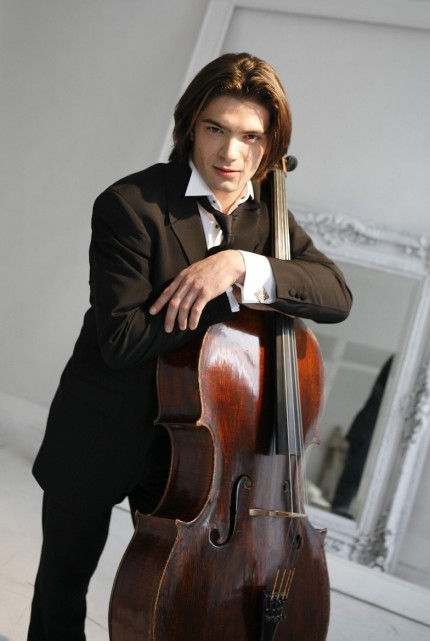Cellist Capuçon’s poetic CSO debut highlights Dutoit’s French program

At last week’s Chicago Symphony Orchestra concerts, Nikolai Lugansky made a spectacular CSO debut demonstrating faultless, steel-fingered virtuosity in Rachmaninoff’s Third Piano Concerto.
Thursday night brought another young guest soloist to Michigan Avenue for his downtown bow. And if the vehicle was less populist—and the hall considerably less full—Gautier Capuçon’s performance with Charles Dutoit and the CSO was no less impressive or exciting than that of his Russian colleague.
Rather than the usual Late Romantic suspects, in keeping with the French program, Capuçon’s showcase was Henri Dutilleux’s Tout un monde lointain . . . A cello concerto in all but name, the work was written for Mstislav Rostropovich who premiered it in 1970.
The concerto takes its title (A whole distant world) from Baudelaire, with each of the five interlinked movements preceded by a quotation from the poet’s stanzas. Dutilleux’s elliptical style is here at its most characteristic, with a hyper-refined orchestral palette creating a mysterious, unsettled landscape. Hushed cymbal washes, iridescent colors and subtly shifting textures make a strange and undulating backdrop for the soloist.
Much of Tout un monde lointain . . . is meditative in expression with sudden bursts of aggressive virtuosity, and Capuçon’s poetic performance encompassed the inward-looking reflection as surely as the hectic bravura.
His violinist brother Renaud made an outstanding CSO debut last season and Gautier Capuçon’s appearance was just as imposing. Playing an extraordinary 1701 Goffriller instrument, the French cellist coaxed a striking array of widely terraced hues and dynamics, with high pianissimos that hovered on the edge of audibility. Yet the soloist also brought a bristling propulsion and headlong excitement to the display passages, with a sense of hard-won solace in the penultimate section.
With scrupulous balancing, Dutoit and the orchestra provided all the lucidity and precision demanded by Dutilleux’s shimmering textures. Capuçon received a vocal and enthusiastic ovation, all the more impressive for being elicited by this austere and enigmatic work. Mark your calendar next season for the Brahms’ Double Concerto with both Capuçon brothers sharing the spotlight.

Dutoit has few peers in French repertoire, and showed that once again in the strength and beauty of the Debussy and Ravel that flanked the concerto. Too bad this program is only being repeated Friday afternoon and that there were so many empty seats in the house Thursday.
Dutoit’s gift in Debussy is to reveal the steel beneath the surface Impressionism, as evident in Images, which led off the evening. In “Gigues,” Dutoit segued from the cool mystery of the opening bars through the off-kilter bonhomie of this jaunty yet melancholy music.
The Swiss conductor launched the central triptych of “Iberia” with a malign punch to the opening chord. While the Spanish main theme had all the requisite sassy vigor—wonderfully characterful clarinet work by Stephen Williamson—Dutoit consistently underlined the dark shadows in this music. The central nocturnal “Iberia” section was masterfully directed by Dutoit and rendered with an evocative haze conjuring the evanescent languor with a notably atmospheric oboe solo by Eugene Izotov. In the concluding section of “Iberia,” Dutoit’s acute balancing ensured that every piquant bit of percussion coloring registered through the flashing rhythms. Perhaps “Rondes de printemps,” here coming last, wasn’t quite as finely detailed as the preceding sections, but this was still first-class Debussy by Dutoit and the CSO.
Dutoit concluded the evening with Ravel’s La valse. Dutoit invests Ravel with a mercurial element and nervy edge, qualities firmly manifest in Thursday’s performance. In Dutoit’s hands, Ravel’s deconstruction of the waltz seemed even more subversive than usual with a dark, lurking violence and grotesquerie that made the waltz’s abrupt demise at the coda seem as inevitable as the collapse of the Habsburgs under which it flourished.
The program will be repeated 1:30 p.m. Friday. cso.org; 312-294-3000.
Posted in Performances




